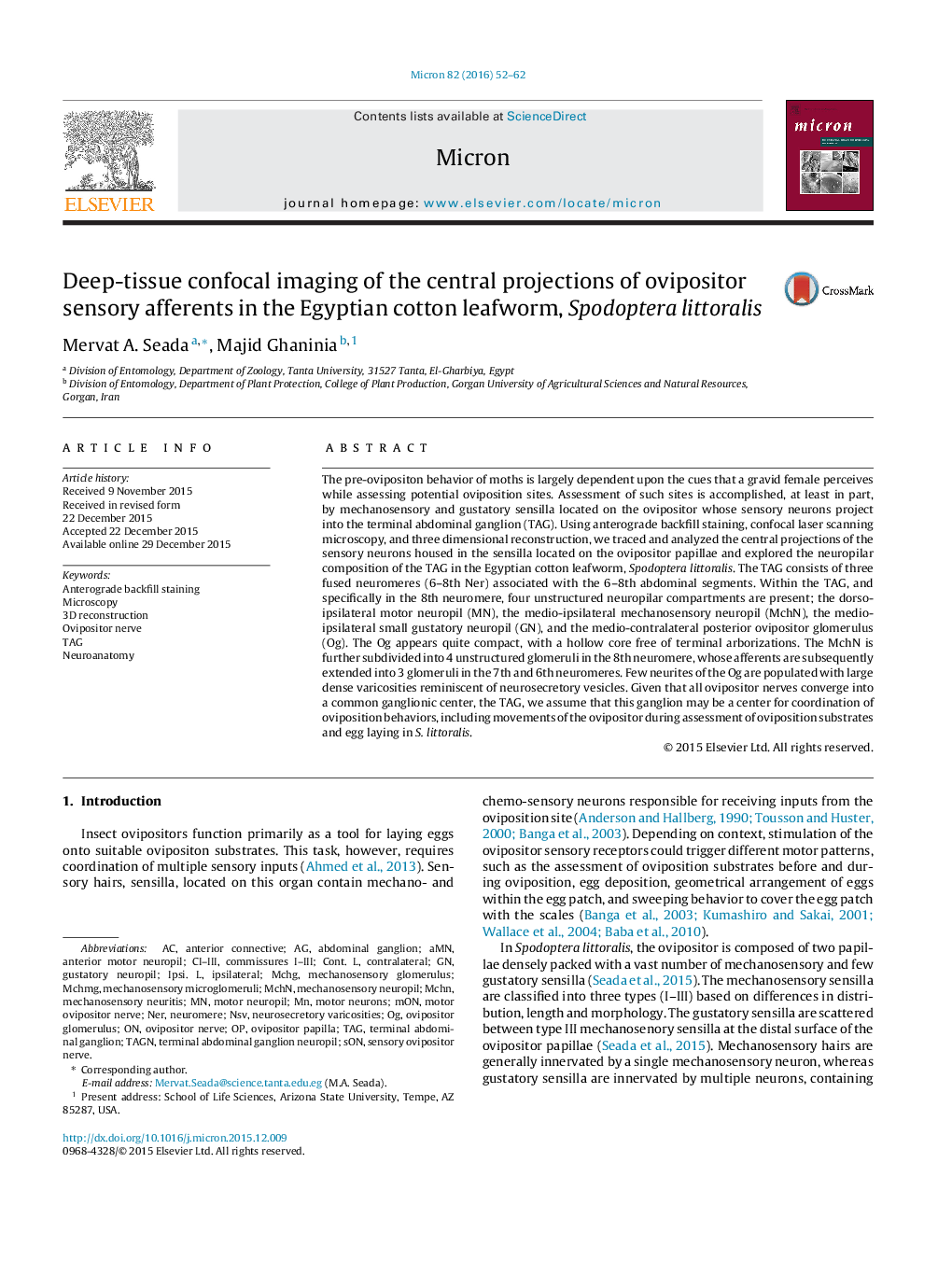| کد مقاله | کد نشریه | سال انتشار | مقاله انگلیسی | نسخه تمام متن |
|---|---|---|---|---|
| 1588739 | 1515134 | 2016 | 11 صفحه PDF | دانلود رایگان |
عنوان انگلیسی مقاله ISI
Deep-tissue confocal imaging of the central projections of ovipositor sensory afferents in the Egyptian cotton leafworm, Spodoptera littoralis
دانلود مقاله + سفارش ترجمه
دانلود مقاله ISI انگلیسی
رایگان برای ایرانیان
کلمات کلیدی
AMNNeuromereNER - DOWN3D reconstruction - بازسازی 3DTAG یا triacylglycerols - تری گلیسرید یا تری آسیل گلیسرولipsilateral - دو طرفهNSV - شورویSON - فرزند پسرMON - مونMicroscopy - میکروسکوپ یا ریزبینNeuroanatomy - نوروآناتومی یا کالبدشناسی اعصابmotor neurons - نورون های حرکتیcontralateral - کنتراستterminal abdominal ganglion - گانگلیون انتهای شکمAbdominal ganglion - گانگلیون شکم
موضوعات مرتبط
مهندسی و علوم پایه
مهندسی مواد
دانش مواد (عمومی)
پیش نمایش صفحه اول مقاله

چکیده انگلیسی
The pre-ovipositon behavior of moths is largely dependent upon the cues that a gravid female perceives while assessing potential oviposition sites. Assessment of such sites is accomplished, at least in part, by mechanosensory and gustatory sensilla located on the ovipositor whose sensory neurons project into the terminal abdominal ganglion (TAG). Using anterograde backfill staining, confocal laser scanning microscopy, and three dimensional reconstruction, we traced and analyzed the central projections of the sensory neurons housed in the sensilla located on the ovipositor papillae and explored the neuropilar composition of the TAG in the Egyptian cotton leafworm, Spodoptera littoralis. The TAG consists of three fused neuromeres (6-8th Ner) associated with the 6-8th abdominal segments. Within the TAG, and specifically in the 8th neuromere, four unstructured neuropilar compartments are present; the dorso-ipsilateral motor neuropil (MN), the medio-ipsilateral mechanosensory neuropil (MchN), the medio-ipsilateral small gustatory neuropil (GN), and the medio-contralateral posterior ovipositor glomerulus (Og). The Og appears quite compact, with a hollow core free of terminal arborizations. The MchN is further subdivided into 4 unstructured glomeruli in the 8th neuromere, whose afferents are subsequently extended into 3 glomeruli in the 7th and 6th neuromeres. Few neurites of the Og are populated with large dense varicosities reminiscent of neurosecretory vesicles. Given that all ovipositor nerves converge into a common ganglionic center, the TAG, we assume that this ganglion may be a center for coordination of oviposition behaviors, including movements of the ovipositor during assessment of oviposition substrates and egg laying in S. littoralis.
ناشر
Database: Elsevier - ScienceDirect (ساینس دایرکت)
Journal: Micron - Volume 82, March 2016, Pages 52-62
Journal: Micron - Volume 82, March 2016, Pages 52-62
نویسندگان
Mervat A. Seada, Majid Ghaninia,